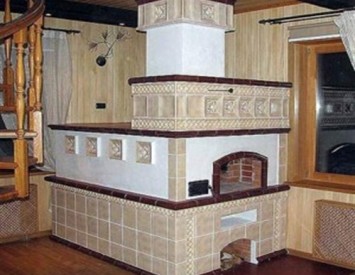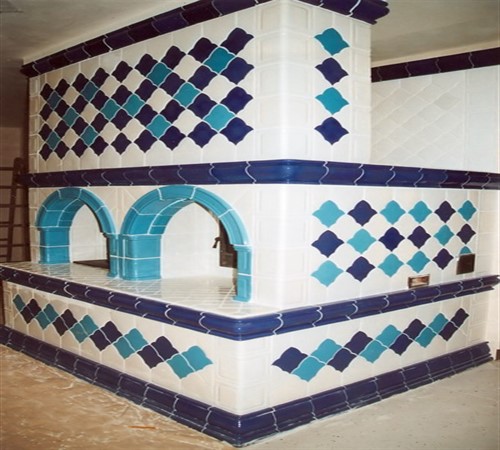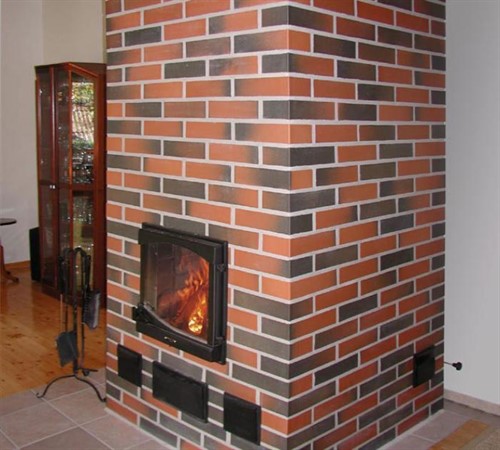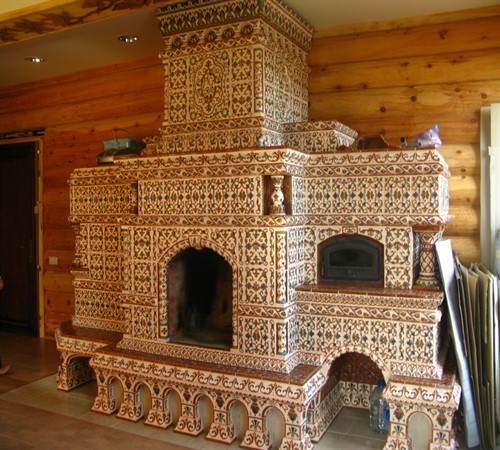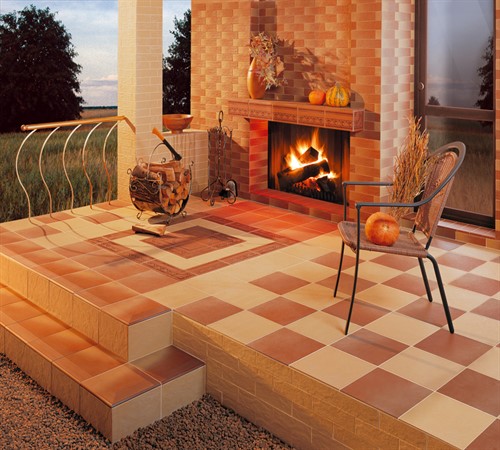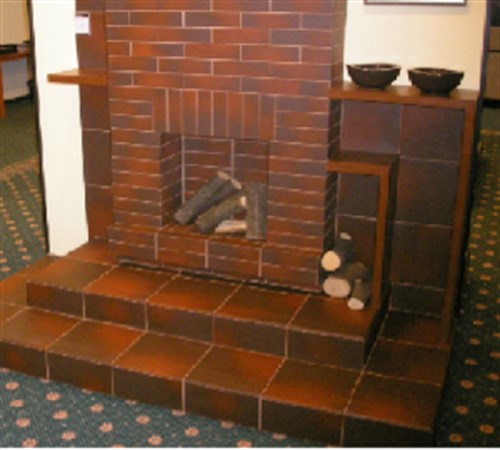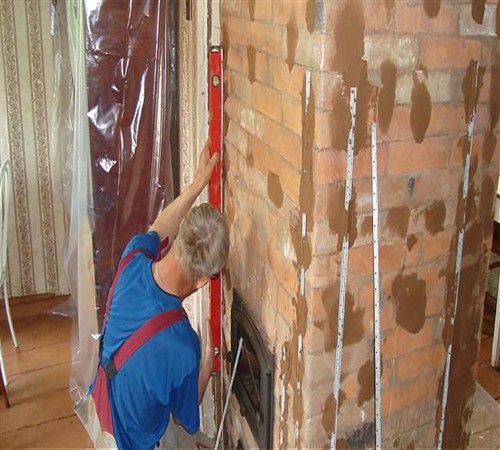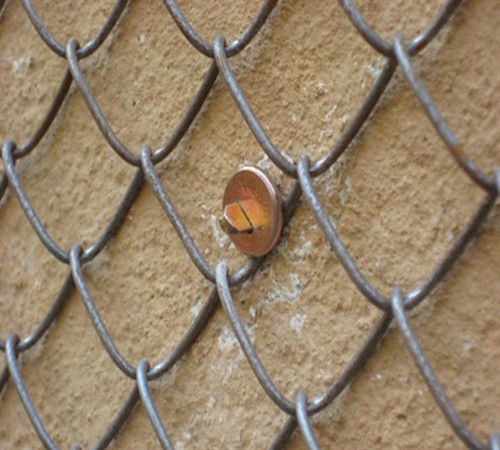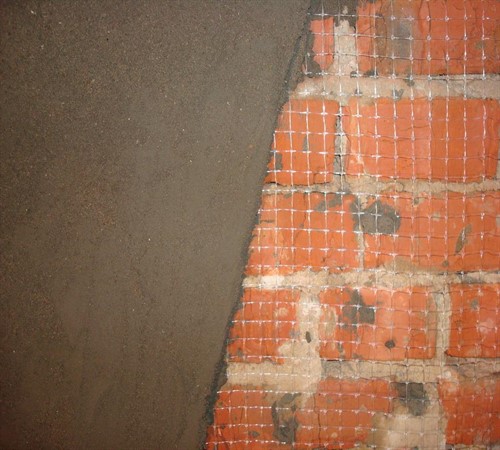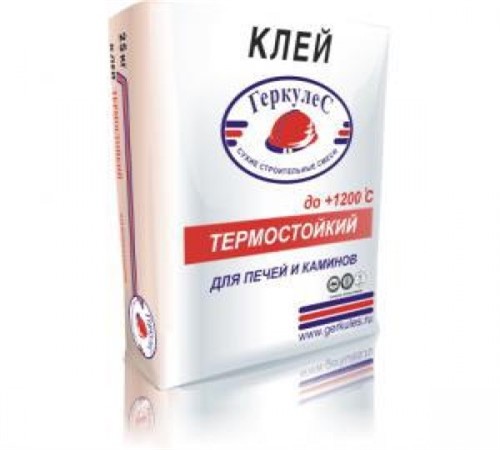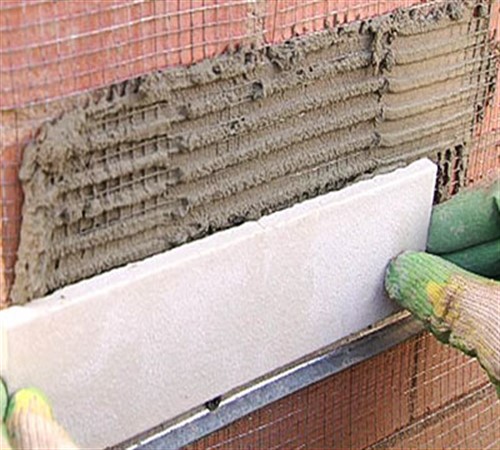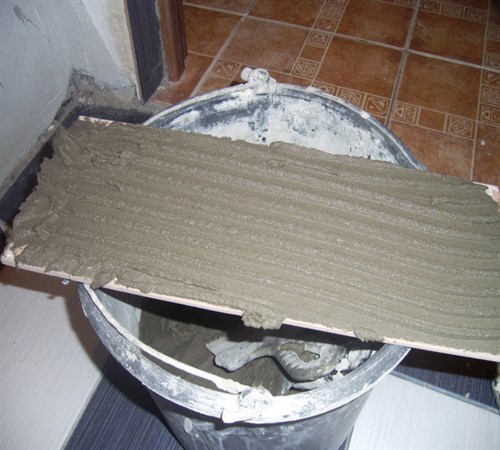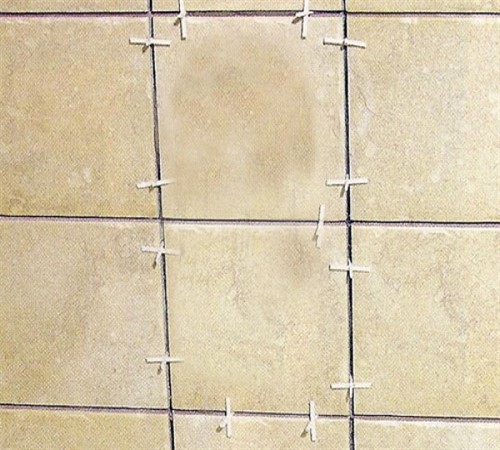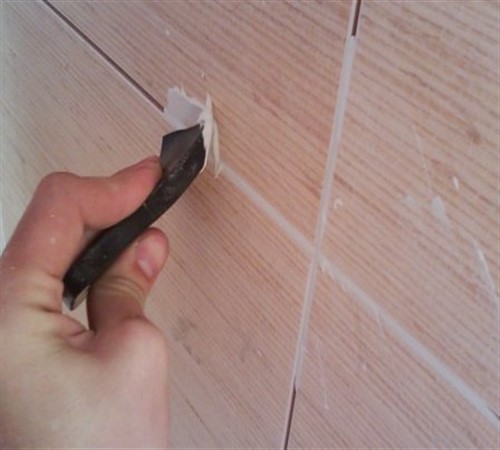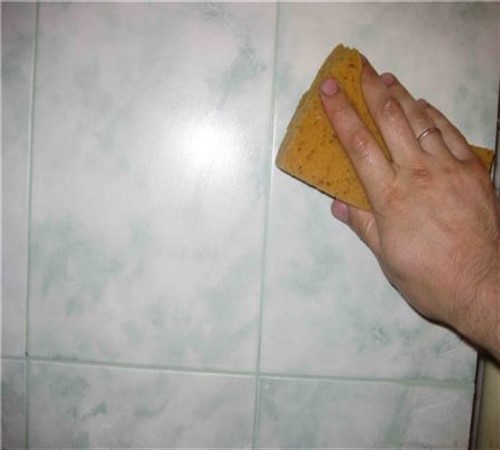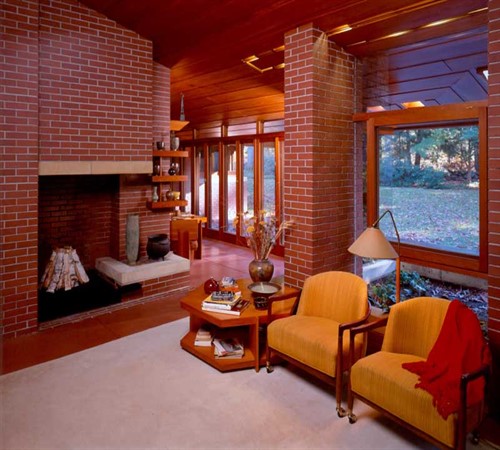Recently, in order to give an attractive and aesthetic appearance into a non -casual stove, clamping with ceramic tiles began to be used more and more often. At the same time, the correct choice of suitable materials and the literacy of installation have a significant impact on the final result of the cladding, so at the preparatory stage it is worth taking this event very seriously.
Content
Criteria for choosing tiles for stove cladding
When choosing facing material, it is worth considering not only the interior style, but also the compliance of the materials with the conditions of future operation. Therefore, choosing a refractory tile, it is necessary to pay attention to the following parameters:
- maximum level of moisture absorption up to 3%;
- the thickness of the tile varies within 6-8 mm;
- the linear expansion coefficient is 7-8% relative to the density of the selected tile;
- the presence of information about the absence of deformation at a sharp decrease/increase in temperature;
- the absence in the composition of the tiles of harmful elements released when the temperature is heated to 1000 ° C;
- high coefficient of thermal conductivity, heat capacity;
- resistance to aggressive environments;
- the manufacturer's guarantee for the operational period, which is up to 50 years.
The inconsistency of the tiles at least one parameter will soon cause the exfoliation of tiles from the base, the formation of cracks, violations of heat transfer and, as a result, a decrease in the efficiency of heating.
Types of refractory ceramic tiles
Recently, the extensive spread has gained clamping of furnaces with ceramic tiles, the price of which is formed under the influence of the cost of its components. However, despite the whole variety of varieties of ceramic tiles, only its following types are suitable for cladding of stoves:
1. Terracotta tiles - is formed as a result of pressing of kaolin clay with subsequent firing at a temperature exceeding 1000 ° C. At the same time, a shame is added to the composition of the clay that increases the heat resistance of the finished product, and various additives in the form of cobalt oxide, manganese, iron, to create a tint spectrum. Terracotta tiles have a homogeneous high -porous structure, an embossed non -eyed surface with unobtrusive shades.
Advantages:
- lack of temporary deformation under the influence of large temperature fluctuations;
- resistance to fading;
- when heated, there is no release of toxic substances;
- high strength with a slight weight that does not require increased structure during facing;
- the speed of heating the structure of the tile with slow heat transfer allows you to maintain heat in the room for a long time;
- high vapor permeability, which prevents the rapid destruction of facing tiles;
- simplicity of laying;
- durability.
The disadvantage of terracotta tiles is a fairly high cost, although a wide selection of the color spectrum, along with the duration of operation, make a price factor insignificant.
2. Mayolika - is made similarly to terracotta tiles, having the same set of advantages.
At the same time, the distinguishing features of the Mayoliki are:
- glazed surface;
- expressive relief;
- the presence of a picture.
Due to the surface of the surface of the tiles with a small layer of glaze, the major can be used to clad furnaces, without fear of the likelihood of cracks in the glazed coating.
3. Clinker tiles - is made by extruding from a variety of clay varieties in combination with chamot, flux, mineral inclusions followed by firing. The clinker tiles are inherent in the glazed or non -eyed surface with small relief.
Advantages:
- a small high -strength structure contributes to good heat transfer;
- low coefficient of moisture absorption;
- excellent heat exchange qualities;
- high frost, heat resistance;
- does not respond to significant temperature changes;
- environmentally friendly material that prevents the release of harmful compounds during heating;
- simplicity of care, installation;
- long -term operation.
Against the background of all the advantages, when facing furnaces with ceramic tiles, the cost, and quite high, is not of particular interest.
When cladding of furnaces, non -eyed clinker tiles should be used, since when heated, deformation of the finishing material is possible, due to various thermal expansion of the walls of the furnace and glazed clinker tiles.
4. Porcelain stoneware - is made from a composition including heterogeneous clay, marble or granite chips, quartz sand, oxides of various metals, by pressing under high pressure. In the process of firing, the temperature reaches 1200-1300 ° C, contributing to the sintering of the mass in a monolithic structure. Ceramic granite is characterized by an unamalized surface, although glazed tiles are also produced in a small amount. However, the smooth surface of porcelain tile is achieved not only by applying glaze, but also by polishing, slightly reducing the strength of the product. 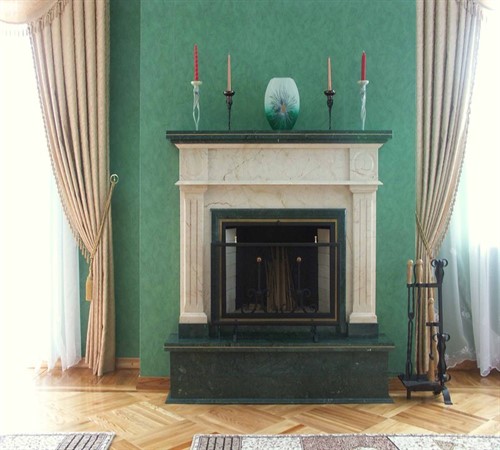
Advantages:
- the possibility of imitation under granite, clinker, terracotta;
- resistance to fading;
- high strength of the product prevents temporary deformation;
- resistance to cracking of the surface within the large range of temperature fluctuations;
- minimal moisture absorption, contributing to the use in conditions of high humidity;
- frost resistance;
- durability.
Of all types of ceramic tiles, porcelain stoneware has a long period of use, along with the predominance of quality characteristics and, accordingly, cost.
5. Tiles - piece material made from special varieties of clay by firing at high temperatures. Tiles have a glossy glazed surface with a pattern applied, although the monophonic surface is no exception. In this case, the surface of the tiles is perfectly even or containing some relief or significant bulges and concave.
A distinctive feature of tiles, from all types of tile material, is the presence of a void from the wrong side of the element resembling an open box, due to which unique heat -saving properties are provided. 
Advantages:
- environmental cleanliness of the product;
- high resistance to sharp temperature fluctuations;
- moisture-, frost resistance;
- non -possession of mechanical deformation, under the influence of ultraviolet radiation;
- high heat transfer coefficient;
- ease of care;
- long -term operational period.
Exacerbularly high cost did not give the lining of tiles of particular popularity. In addition, the installation of tiles is carried out only in the process of laying the furnace, i.e. It is simply impossible to clarify the already folded stove with them.
Technology for cladding furnaces with ceramic tiles
The whole process of facing is divided into several stages, the sequence and completeness of which will be the key to the success of the final result.
Preparation of the base
Preparatory work is associated with the performance of the most dirty work, on which the reliability of the clutch of the tile with the surface of the furnace depends. In the process of preparation, it is necessary:
- thoroughly clean the surface of plaster, paints up to brick;
- make frequent notches about 2 cm deep, if the furnace was painted and the removal of the paint causes a strong difficulty;
- clear the seams between the brickwork to a depth of 1 cm using a metal brush, or a grinder;
- wipe the surface with a damp cloth, removing dust and the remaining particles of garbage;
- every 0.5 m into the meil seams, drive out nails, or screw the anchors, leaving a distance to a surface of about 5 mm to fix a grid or wire;
- install the finished grid with cells of 50x50 mm, or build it from the wire, fixed by means of nails, anchors;
- mix a solution of sand, clay and cement in a ratio of 0.2: 3: 1, although you can use ready -made adhesive compositions (for example, Skanfixsuper);
- plastered the entire surface of the furnace with the prepared solution;
- check the verticality of the corners, walls using a plumb line;
- if necessary, apply an additional layer of solution until straight surfaces and angles reach;
- wait for the complete drying of the plaster layer and threw the furnace;
- after cooling the furnace, you can proceed to the installation of tiles.
The choice of adhesive composition
The glue used to lay tiles is not necessary to choose the most expensive. The most important thing is that it be thermomestic and withstand temperature differences without any change in its original species. At the moment, such brands of heat -resistant glue as Hercules, Ivil the Termix, Ceresit, are somewhat different in the composition, costs.
An ideal option would be to purchase facing tiles and adhesive composition in one store, where they will immediately select the glue relative to the selected version of ceramic tiles.
Tile laying
Before the direct process of cladding, along the perimeter of the furnace, it is first necessary to horizontally use the level, to fix the rail so that the height from the upper edge of the rail to the floor is equal to the height of the tile, taking into account the inter -seam.
The implementation of this procedure is due to possible, even insignificant, irregularities of the floor, due to which the seams of the above rows will be distorted, violating the aesthetic attractiveness of the faced furnace.
The cladding of the tile is carried out in the following order, starting from the fixed rail:
- apply glue with a thickness of 2-5 mm to the tile and flatten a gear spatula over the entire surface;
- apply to the wall and, turning a little tile from side to side, finally pressed off with your hands in the right position;
- lay the next tile in a row in a similar way;
- substance crosses between the tiles, providing the same seam width;
- at the end of the upper row, remove the horizontal rail;
- try on the tile in height, if necessary, cut, then apply glue and glue to the surface of the furnace;
- give the glue thoroughly dry for 3 days.
Grout of the seams
To fill the tile joints, you can choose a special grout in the tone of the facing material, or contrasting with the main color of the tile, or you can use the composition with which the styling was carried out. Expanding process:
- delete crosses;
- clean the seams from the remaining glue;
- wipe the surface with a damp cloth in order to avoid dusting into the grout;
- dilute the grout according to the instructions and mix thoroughly;
- for maximum filling of the suture space, it is necessary to compact the grout with pressing movements of the hand using a rubber spatula;
- the rounded end of the spatula is drawn at the filled seam, giving the final look;
- after 2-3 hours, wipe the surface with a moisturized rag, removing traces of the remaining embroidery;
- after a day, the surface of the tile can be washed with a soap solution, and then let it dry finally.
As a result, what result is obtained when facing furnaces with ceramic tiles, the video will tell you again:
Useful tips
- For outer corners, it is necessary to use whole tiles, and in the places of the furnace with the wall, cut parts are quite suitable.
- When cutting, the masking tape glued to the surface of the tiles will prevent the formation of a chip while sawing off the required element.
- Cut fragments are laid only after the end of the cladding with whole tiles.
- Each 2 rows, it is necessary to check the evenness of the tile by the level, since the glued tiles can only be corrected for 15 minutes, until the glue is grasped.
- An excess of adhesive composition, which ends in the seams, must be removed immediately with a narrow spatula.
- Adding to the adhesive composition of conventional salt (1 bucket of glue + 1 kg of salt) provides an obstacle to rapid evaporation of moisture, increasing the time to adjust the position of the laid tile.
- It is better to start drowning the stove a little, after 1-2 weeks, so that finishing materials gradually get used to an increase in temperature. Otherwise, a sharp difference in high temperatures may lead to exfoliation of tiles from the surface of the furnace.
At the end of the cladding of furnaces with ceramic tiles, the photo of which is presented in the article, the oldest furnace takes the form of a brand new structure, pleasing its owner to be the result.
